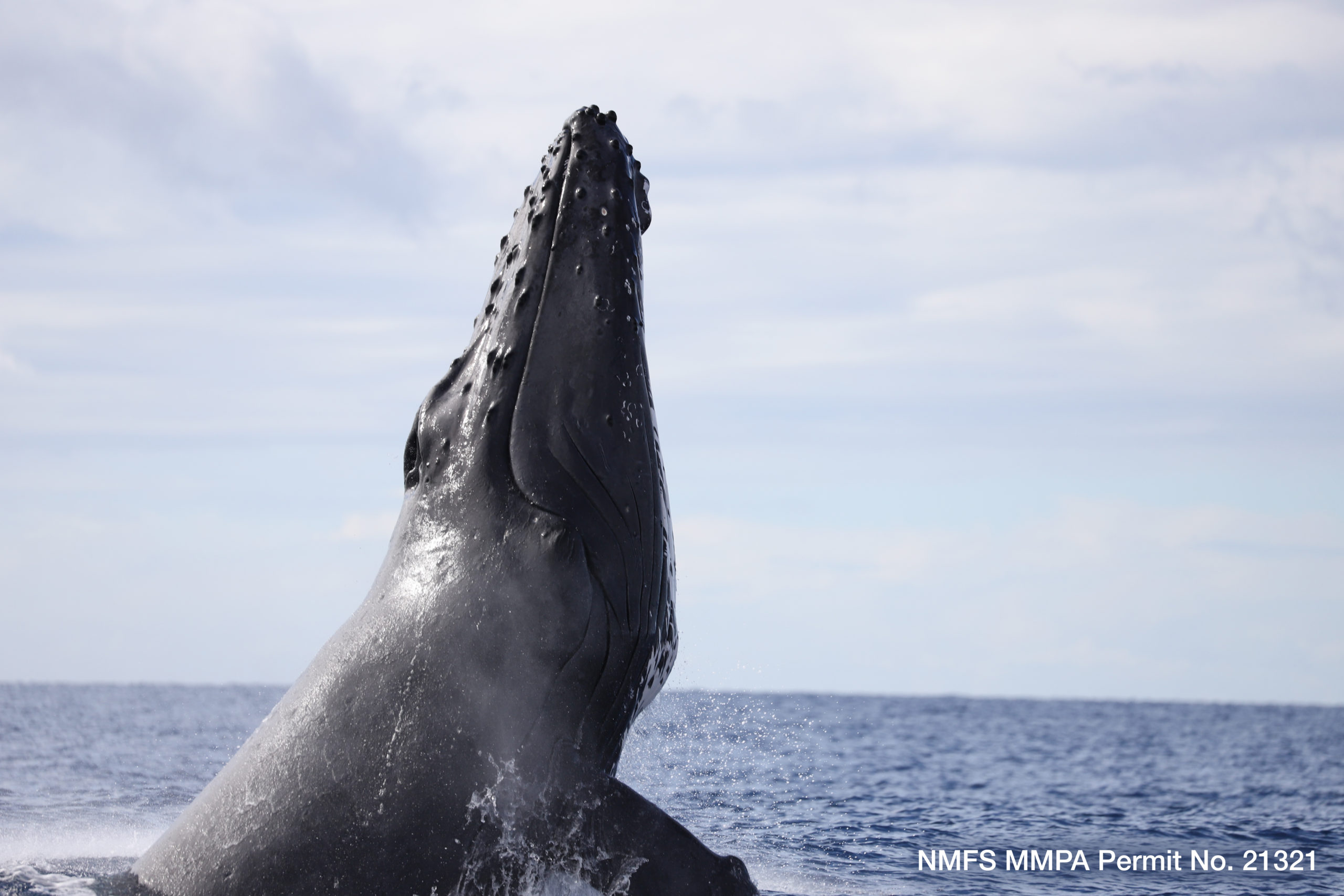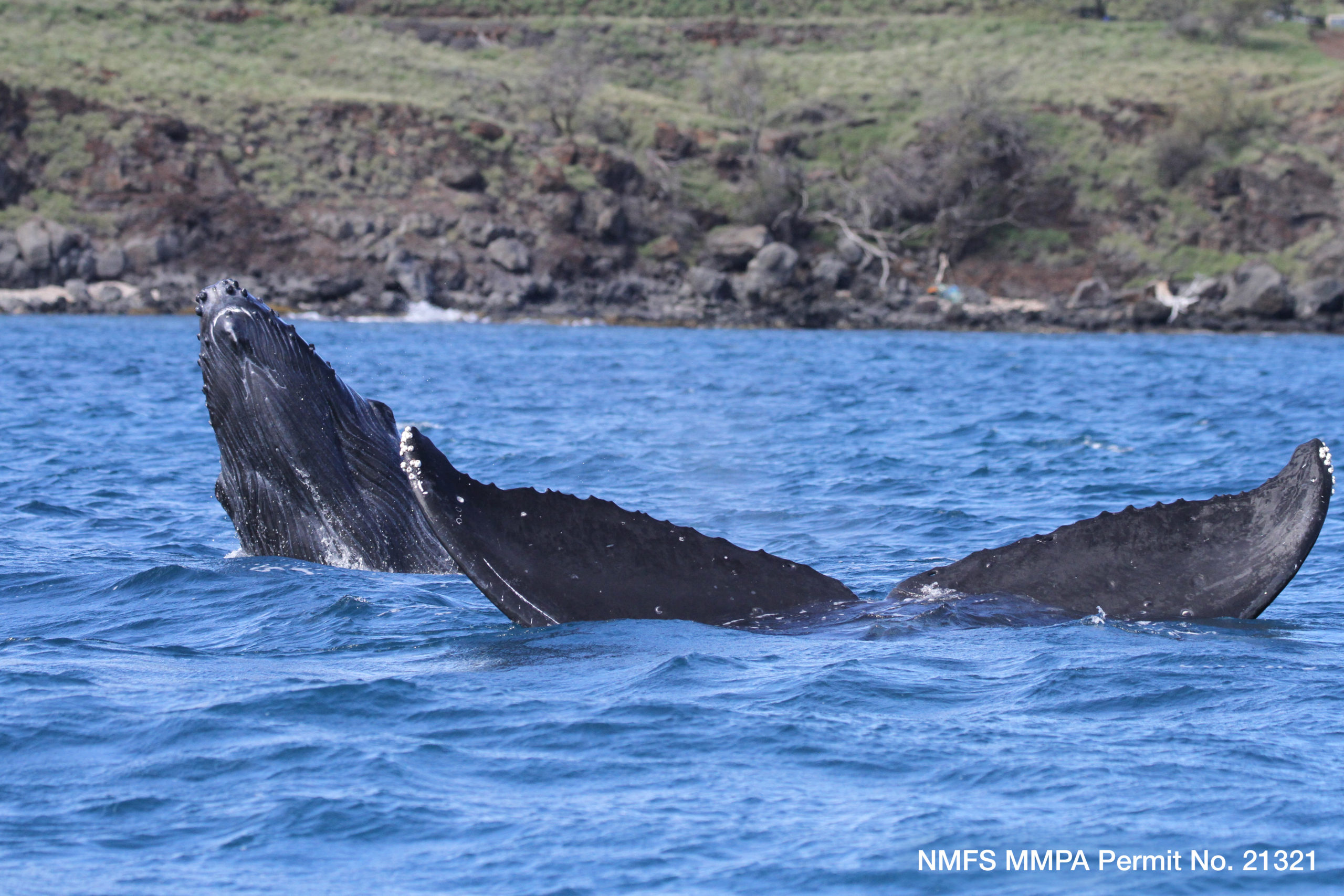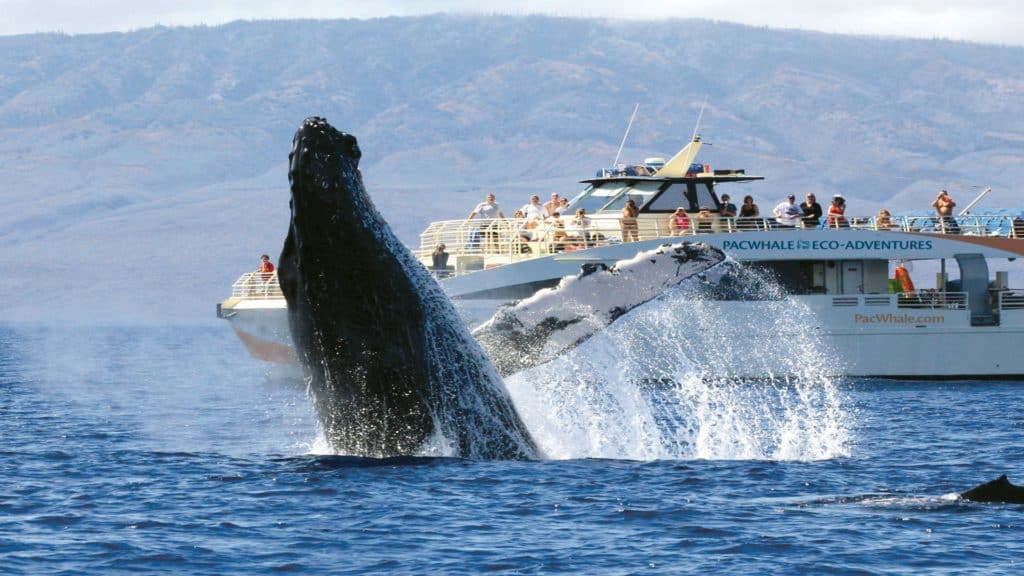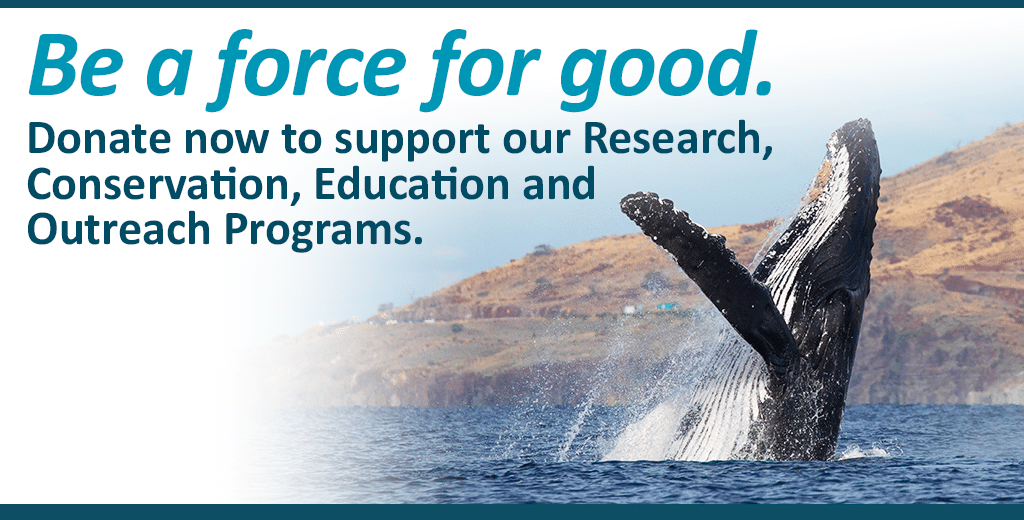Each year, an estimated 40 whale-watch tour companies operate in the waters of Maui Nui, ferrying passengers out to sea for the experience of a lifetime — the chance to see majestic humpback whales in their natural habitat. Factor in other boating activity such as fishing and recreational vessels, and the ocean can become quite crowded for humpback whales in the area resulting in potentially dangerous situations for whales and boaters alike.

Ship strikes and unsustainable tourism practices are among the major threats to whales and dolphins, as identified by PWF researchers and have been the subject of years of research, according to PWF Chief Scientist Jens Currie. “The research began in 2013, when we first set out to answer that question of what can we recommend as the best speed for boaters operating during whale viewing season,” he explains.
In addition to PWF research, peer-reviewed studies from Hawaiʻi and abroad, from 1995 on, were scrutinized to establish these scientific-based recommendations. For example, one recommendation is to reduce speed to six knots when within 400 yards of a humpback whale, which was based on a study in Australia that monitored acoustic outputs of vessels and their impacts on humpback whales. “It’s nice we can put some quantification on this from our scientific studies,” Currie said. “You’ll have much more time to react, the slower you go. It’s significantly different at those slower speeds than higher ones.”
For the past year, representatives from PWF, Hawaiian Island Humpback Whale National Marine Sanctuary, DLNR-Division of Aquatic Resources, DNLR-Division of boating and Ocean Recreation, the Hawaiian Islands Humpback Whale National Marine Sanctuary Advisory Council, tour boat operators, such as PWF’s social enterprise PacWhale Eco-Adventures, and invested members of the community have worked on the set of recommendations to keep both whales and watchers safe. Although PWF and the Sanctuary have separately advocated for additional recommendations for years, Currie notes that “broader collaboration is important to ensure a wide array of stakeholders and their interests are represented for better community buy-in and success of the recommendations.”
Key recommendations resulting from the collaboration include:
- Speed limit of 15 knots or less, or minimal planing speed, within water 100 fathoms (600 ft) deep or less
- When approaching and departing whales, reduce vessel speed to six knots when within 400 yards
- Post a designated observer/lookout while underway
- Pay close attention to the time of day and time of year. Humpback whales begin to arrive in the waters of Maui Nui typically in October, with peak season being January, February, and March with a drop in numbers from April to May. The more whales that are in the water, the more likely disturbance or collision is to happen. Whales are here both day and night. When traveling at night, you might want to reduce your speed even further since your chance of seeing a whale visually is reduced.
These voluntary recommendations are in addition to official regulations:
- 100-yard approach limit to humpback whales
- No ‘leapfrogging’ or in other words, if you see a whale traveling, you are not allowed to intentionally enter its path so that they approach you
Armed with fresh awareness driven by PWF and partner research, the collective Maui boating community, both commercial and private, are in agreement and want to do what’s best for the whales. With support from several partners and the on-water community, as well as PWF and social enterprise PacWhale Eco-Adventures, we anticipate solid attention to the new guidance that will protect these magnificent animals and all who come to see them. For more information, click HERE.



